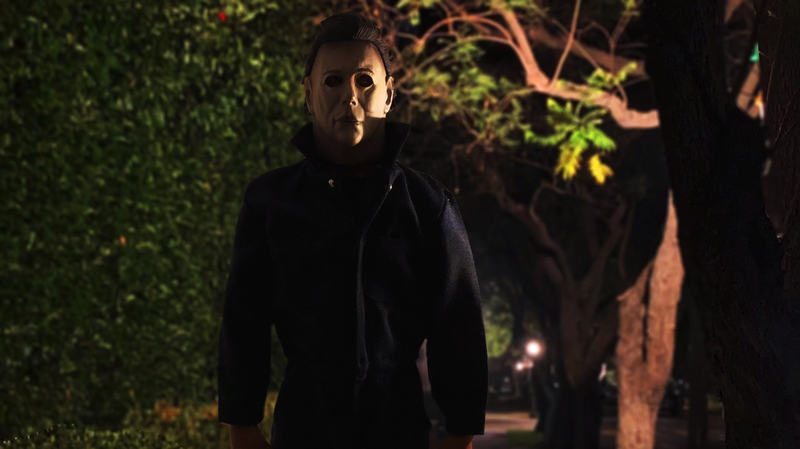Last week we explored the world of Derek Travis' mangled entrails and decapitated heads toy photography. Today we are diving into the moody work of action figure photographer Mike J. Marin. Marin chats with us about how toy photography opens up whole new realms of possibility when it comes to staging scenes and bringing a single frame to life in a way that tells a whole story. We're shining the spotlight on some of our favorite toy photographers and getting to know the creeps behind the lens, with a focus on just how much individual artists' styles can vary, opening up realms of possibility.

What inspired you to get into photographing horror toys?
My love of the horror genre, storytelling, and my passion for collecting action figures are the perfect recipe that got me into the AFP medium. I would say that my skills sharpened a lot during 2020, when the pandemic was gaining strength. I’m diabetic, so I stayed home most of the time to keep myself safe. That’s when I started cracking open my figures and began shooting them. Man, I was up to about 10-15 pictures a day that year. Also, being an indie filmmaker helped me with setting up shots for the single-frame stories I was telling with my AFP.
And horror action figures do capture the best shadow, you know? They’re naturally contoured to absorb and deflect light in their malevolent details, making the viewer experience the same sense of unease they might have felt in the theater while watching these characters onscreen for the first time. That’s what I try to capture when setting up these particular figures in my studio. They are an homage to the genre that’s everlasting.
Do you have anything on your to-do list that you’re excited to photograph? Either a specific collectible, a certain setup, something that is special to you for one reason or another?
When Trick Or Treat Studios announced they were doing a 1978 Halloween Michael Myers 12” figure, I knew that would become an instant grail in my collection. I HAD to get it. And it did not disappoint. As a person who holds the original Halloween as his hands-down all-time favorite horror movie, this was the figure to get because, in my humble opinion, this figure has the best movie-accurate head sculpt out of all the figures produced of the original Nick Castle Michael Myers.
When I got this figure, I already knew the setups I was going to do, and they all came out exactly how I envisioned them. I had to stay vigilant to this character because he’s one of the most iconic madmen in horror movie history. I had to do The Shape justice. And Halloween will always hold a special place in my heart because it’s the first scary movie my mom and dad let me go see with my brother and sister at the little movie theater down the street back in 1978, even though the condition was if we went to see it, we had to walk back home in the dark afterward!
Take a look at some of Marin's favorite shots below with some behind-the-scenes details of making these shots come to life, one frame at a time.
“Imagination, an eye for detail, and a good camera phone are all you need to tell single frame stories, one shot at a time.” - Mike J. Marin
I use a photo lightbox to set up my figures before I do a shoot. For certain shots, such as action scenes, I use clear plastic boxes of various sizes to support and secure my figures in action poses. They’re easier to use than wire or those plastic support stands with the clamps, especially when you’re cropping your figure for Photoshop compositing. For the Michael Myers Halloween figure, I placed him in his standard Shape “I’m watching you” pose.

One of the key aspects of AFP (Action Figure Photography) is lighting. Lighting is mad important, especially when you’re working in horror AFP, because it’s all about capturing the mood and a sense of eerie dread, or foreboding in your setups. When I create horror shots, I always look to capture the best shadow effects by using small dollar store push lights (pictured here) or sometimes candlelight for that warm, soft effect, which I call “storyteller light.” It may take several shots to get the right one for whatever story your picture is trying to tell.

Whenever I’m out and about, I’m always looking for scenery that would make good background shots for my AFP. Some of my backgrounds I get online, mainly ones that are free to use and high quality, which are the best to use in Photoshop. For this shot, in particular, I took pictures in my neighborhood one night that resembled the deserted streets of Haddonfield, IL. After I took pictures of The Shape figure, I composited the figure onto one of the shots I took, making sure the lighting on the figure matched the lighting and atmosphere in the background.
View more of Mike's work on Instagram @theboneyardcollectibles and check out his award-winning short film “Unboxed: The Art of Action Figure Photography” on YouTube.






